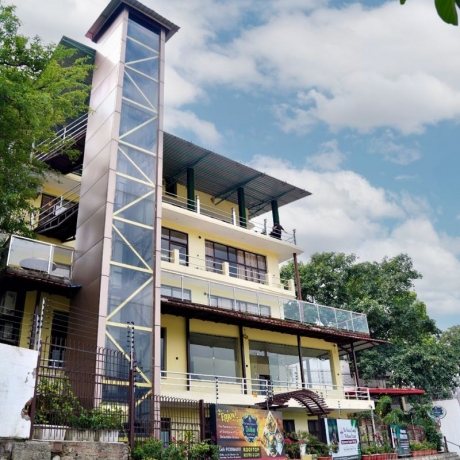India is the birthplace of Ayurveda — a 5,000-year-old system of natural healing that treats the whole person: body, mind, and spirit. If you are looking to restore balance, reduce stress, and regain natural vitality, choosing the Best Ayurveda Wellness Center in India can change your life. In this blog I'll walk you through what makes a center truly excellent, what to expect during a stay, how treatments work, and tips to pick the right place for your needs. Simple language, practical advice, and gentle encouragement — let's go.
What is Ayurveda and why choose an Ayurveda wellness center?
Ayurveda means “science of life.” It focuses on understanding your unique constitution (dosha) — Vata, Pitta, or Kapha — and using diet, herbal medicine, massage, yoga, and lifestyle changes to bring you back into balance. An Ayurveda wellness center combines traditional knowledge with a healing environment and skilled therapists to deliver personalized care.
People choose an Ayurveda wellness center for many reasons:
-
Chronic issues like digestion problems, joint pain, or stress
-
Post-illness recovery and immune support
-
Deep detoxification (Panchakarma)
-
Rejuvenation and anti-aging
-
Better sleep, clarity, and energy
A well-run center does more than offer treatments — it helps you build healthier habits that last.
What makes the Best Ayurveda Wellness Center in India stand out?
Not every center is the same. When searching for the Best Ayurveda Wellness Center in India, look for these qualities:
-
Authentic trained practitioners
The best centers employ licensed Ayurvedic doctors (Vaidyas) and therapists trained in classical techniques. Look for staff who explain diagnosis and treatment clearly, and who prescribe individualized plans rather than one-size-fits-all therapies. -
Personalized treatment plans
An initial consultation should include pulse reading, a detailed health history, and lifestyle assessment to determine your dosha and health needs. Good centers tailor diet, herbs, and therapies accordingly. -
Focus on Panchakarma and preventive care
Panchakarma is the deep detox protocol in Ayurveda. High-quality centers offer safe, supervised Panchakarma along with ongoing lifestyle and diet counseling to prevent relapse. -
Clean, calm environment
Healing needs peace. The facility should be clean, calm, and well-maintained with quiet spaces for rest. Natural surroundings and access to healthy food add to the healing effect. -
Transparent communication and safety
Expect clear explanations of benefits, risks, costs, and realistic timelines. Safety standards, hygiene, and emergency procedures matter — especially if invasive therapies or herbal medicines are used. -
Integration of yoga and meditation
Yoga, pranayama (breathwork), and meditation are natural companions to Ayurvedic healing. Centers that include daily classes or guidance help reinforce the benefits of treatment. -
Balanced use of herbal medicines
Quality centers use time-tested herbal formulations and avoid unnecessary or hazardous prescriptions. They should source herbs responsibly and explain why each formula is used.
Typical therapies you'll find
Here are common therapies offered at leading Ayurveda wellness centers:
-
Abhyanga: Full-body warm oil massage to improve circulation and relax the nervous system.
-
Shirodhara: A gentle stream of warm oil poured over the forehead — deeply calming and great for sleep and anxiety.
-
Panchakarma: A series of detox procedures (including Vamana, Virechana, Basti, Nasya, and Raktamokshana where applicable) tailored to your condition.
-
Kati Basti and Janu Basti: Targeted oil pools for back and knee problems.
-
Nasya: Nasal oil drops for headaches, sinus issues, and mental clarity.
-
Pizhichil: Warm medicated oil bath for joint and neurological conditions.
-
Herbal steam, fomentation, and fomentation therapies for muscle and joint stiffness.
A qualified center explains each therapy's purpose and monitors your progress closely.
What to expect during a stay
A typical Ayurvedic retreat lasts from 7 days to 28 days or more, depending on your needs. Here's a simple outline:
-
Initial consultation: Pulse diagnosis, questions about diet, sleep, digestion, and lifestyle. Tests may include basic health checks.
-
Diet and daily routine: Expect a sattvic (pure), easy-to-digest menu that supports your treatment. Meals are often freshly prepared using herbal spices.
-
Therapies: Daily treatments with time to rest afterwards. You'll usually have at least one consultation a week to track progress.
-
Yoga & meditation: Gentle daily classes to support treatment and increase mindfulness.
-
Herbal medicine: Prescriptions may be given as powders, tablets, oils, or decoctions. Follow doses carefully and ask questions if unsure.
-
Aftercare plan: A good center gives you a clear plan for diet, exercise, and follow-up, so benefits continue at home.
Realistic outcomes and timeframe
Ayurveda emphasizes gradual, sustainable change. Some improvements can be felt quickly — better sleep, less stiffness, calmer mind — while deeper imbalances may require longer-term care. Panchakarma often brings noticeable vitality and clarity after completion, but maintenance with diet, herbs, and lifestyle is crucial.
Expect honest timelines from your practitioners. The Best Ayurveda Wellness Center in India will tell you what's likely, what's possible, and how to maintain gains.
How to choose the right center for you
Choosing the right center depends on your goals, budget, medical needs, and comfort. Here are practical tips:
-
Research reviews and credentials. Look for feedback from past guests and verify practitioner qualifications.
-
Ask about doctor involvement. Ensure an Ayurvedic doctor leads the treatment plan.
-
Check facilities and hygiene. Photos, virtual tours, or a quick call can reveal a lot.
-
Inquire about emergency care. Know how the center handles medical emergencies or referrals.
-
Compare program transparency and costs. Understand what's included — meals, consultations, tests, and medicines.
-
Start small if unsure. A 7–14 day program helps you test compatibility before committing to a longer detox.
Who should avoid intensive programs?
While Ayurveda is gentle, some people should take precautions:
-
Pregnant or breastfeeding women should avoid many Panchakarma procedures.
-
People with uncontrolled medical conditions (advanced heart disease, certain cancers, unstable diabetes) should consult their specialist first.
-
If you are on complex medications, coordinate care between your doctor and the Ayurvedic physician.
A responsible center screens guests carefully and customizes for safety.
Bringing Ayurveda home: simple tips after your stay
The best centers teach you habits that continue to heal. Here are easy practices to keep:
-
Daily routine (Dinacharya): Wake early, have regular meals, and sleep reasonably.
-
Eat seasonal, warm, home-cooked food that suits your digestion. Avoid heavy, cold, processed meals.
-
Gentle self-massage (Abhyanga) a few times a week with warming oil helps circulation and sleep.
-
Mindful breathing and short meditation each day reduces stress and improves focus.
-
Herbal teas and simple digestive aids like ginger or cumin can support digestion — but follow your practitioner's advice for herbs.
Final thoughts
If you want lasting change rather than a quick fix, finding the Best Ayurveda Wellness Center in India can be a turning point. The right center will meet you with empathy, diagnostic clarity, trained practitioners, and a personalized plan that honors your unique body and life. Healing in Ayurveda is a partnership — the center provides the wisdom and tools, and you bring commitment and openness.
Whether you need recovery from illness, relief from stress, or a gentle reset, Ayurveda offers practical, natural support. With good guidance, you can return home not just rested, but equipped with new habits that keep you well for years.






